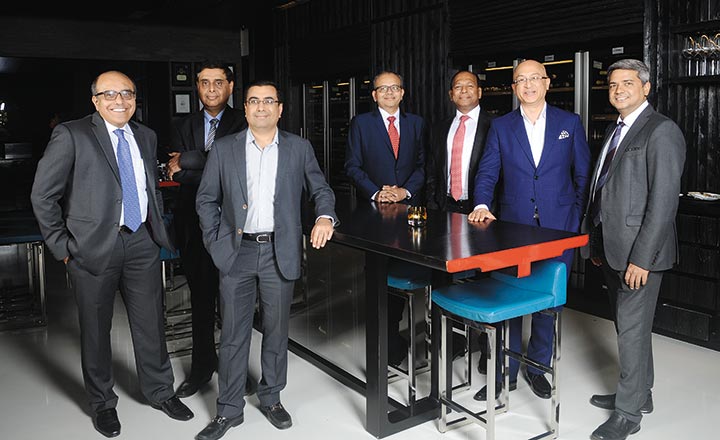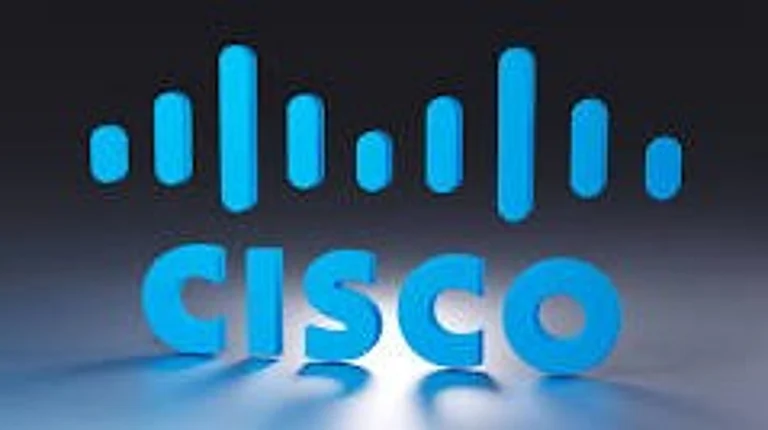Outlook Business (OB): It’s a pleasure welcoming you all to the sixth Outlook Business annual private wealth roundtable. What’s interesting to note is that in each of the past five years that we have met, the expectation has always been that equity would, on an average, fetch 12% to 15% return. But the fact is that in each year, return was either lumpy or negative. So, this time around, let’s just look at the legs on which the market is marching on, and assess which one of those legs are the most vulnerable and which are the ones that can really accelerate and lead the market higher.
Nitin Rao, group head - private banking, third-party product sales and HNW vertical), HDFC Bank: Since Modi’s victory in May 2014, one had taken a bullish view of the market. But at 32,000 level, we don't see a further upside given the current valuation. We don't want to go by sentiment or by the extent of liquidity prevailing in the market. Though we are not in a bubble territory, the market appears richly valued. Structurally, we are in a bull run, but over the next six months, earnings have to catch up.
Rajesh Saluja, CEO & MD, ASK Wealth Advisors: Last year, we had mentioned that GST would have a positive impact but its effect would be visible only in the third quarter of FY18. And we did see some initial disruption during the year. But from the third quarter onwards, earnings will start getting better. Transmission of lower interest rates, too, has happened. Working capital rates have come down from 11% to 8%, which will have a positive impact on P&Ls. However, from a trailing earnings perspective, and even when you compare with the MSCI Emerging Index, we are quoting at 20-25% premium, which is expensive compared with other emerging markets. If the disruption owing to GST doesn’t get sorted out, earnings could get downgraded further, and this might make the market even more expensive. Currently, we are fairly valued, but if earnings don’t pick up, a 5-10% correction can be in store.
OB: So fundamentally weak, but liquidity is the driving force…
Saluja: Fundamentally. the Sensex may appear weak, but there are certain sectors which are doing extremely well.
Atinkumar Saha, head, wealth management, Deutsche Bank:Over the past three years, the government has been pushing through a lot of positive reforms, such as the bankruptcy code, RERA, and the GST. From a sentiment perspective, these actions give a lot of hope. But negativity is kind of creeping in over the implementation of GST, the impact on jobs, rising inflation and concerns over the deficit. But the market seems to have factored that in. In the near term, given the foreign and domestic fund flows, we don’t expect a drastic fall but there is no reason for the market to go up either.
Ashish Gumastha, CEO, wealth management, Julius Baer Wealth Advisors (India): Since I represent a global house, let me just share our perspective. Let’s see what's happening in the US. Given the tax cuts, massive capital may come into the US market. China this year goes in for an election. Over the past three months, the Chinese authorities have clamped down heavily on pollution and see its impact on metal prices. So, at this point in time, there doesn’t seem to be any major risk. Then there is excess liquidity. Even with the Fed tightening, there doesn’t seem to be anything radical in the offing. In such a situation and given the possible listing of Saudi Aramco, when oil prices will be at a good level, emerging markets will end up doing better. The situation in India can be compared to a house under construction. When you enter such a house you feel that there is absolute chaos but in the end things will turn out well. GST is major tax reform and will take six months or a year to get fully implemented. I believe, next year, demand should revive and in the following year, capex will bounce back. What will change is the return expectation, and what the market is telling you that it may possibly front-end the return. In short, the rally is likely to continue. The composition of earnings, however, will change. Last three years, earnings came from consumer companies, from farmers, and from technology. Going forward, you will see metal stocks, capital goods and oil marketing companies doing well. So, in my opinion, if you have money to invest you should invest.
OB: So you are positive on India from a global perspective…
Rao: Let me cut in. Since we are talking about different time frames, over a two- to three-year perspective, we, too, are positive. In the short term though, one can expect 10% kind of a correction.
OB: So, Ashish, are you positive about the next one year?
Gumastha: Yes
Saluja: Let me add. If earnings don’t pick up, that’s when a correction could occur. But, for now, there is an underlying positive momentum in earnings that will play out once the GST issue gets sorted out. Lower interest rates, and improved earnings in many sectors are key indicators to watch out for.
OB: Umang, do you share a similar view?
Umang Papneja, senior managing partner & CIO, IIFL Investment Managers: We could be in for an earnings surprise over the next two to three quarters. But the one trigger which is driving the market and could change overnight is something that began from November 2016 - the move towards financial assets. We have Rs.20,000 crore coming into equity mutual funds, of which around Rs.5,000 crore is coming from SIPs, Rs.2,500 crore as PF investment and Rs.12,500 crore from HNIs and corporates. Now, you cannot base your investment decision on this liquidity because it can stop if the market suddenly tanks 5-10%. There is a sense of complacency sinking in that the flows will continue and this overconfidence on the Street gives me a creepy feeling. Consensus taking over is something to worry about.
OB: Jaideep, are you as worried?
Jaideep Hansraj, senior EVP & head, wealth management,
Kotak Mahindra Bank: The way I look at the scenario is that if the GDP is going to grow at 6.5%-7% and if inflation stays at 3.5-4%, the nominal GDP growth rate will be around 10-11%. So, if the economy is growing at 10-11%, there will be pockets of growth which will fetch investors 14-15% kind of return. It may not happen in a year, but assuming 15% CAGR over a three-year period, then Rs.100 invested today in equities will fetch you Rs.150. Fundamentals are a bit of a worry but again that’s from a short-term perspective as the economy is going through a churn. Would I ask investors to slow down on their equity investments? My answer would be no. From a long-term view, things are looking pretty decent.
Adding to the point about financial assets; real estate and gold are no longer the favourites. A lot of money coming out of real estate, traditionally, would always flow back into that asset class. That is not happening anymore. Even in tier 2 and tier 3 towns, financial assets are being viewed as an opportunity to make money. The fact is that there is a serious amount of liquidity in the system and if fixed income is fetching you 4% post-tax, then there is a compelling enough argument to look at other asset classes. I see a huge appetite for alternate strategies — not commodities or structures but I see a lot of money going into hedge funds along with short strategies as and when they are available. I don’t know about REITs. But there could be some kind of demand once it is launched.
About 6 to 12 months back, the risk-reward wasn’t favourable as investors were making 800 bps on fixed income and 9-9.5% in hedge funds or in absolute return strategies. But, today, when your post-tax fixed income return is in the 6% bracket and long-short strategies are still yielding 9-10% return, there is a compelling reason for investors to look at it. Hence, going ahead, fixed income will see lesser and lesser allocation, while alternatives — largely comprising hedges, long-short strategies and absolutely return strategies — will start raking in a lot of money.
OB: Any specific worries for the year?
Hansraj: Macros are, generally, looking positive, except the situation around crude and deficit. We’ve seen a low oil price regime for close to three years now. If oil prices continue to rise and suddenly hits $70-80 a barrel, then it is a cause for concern. The other worries are the pressure on working capital cycles, and not enough jobs being created as a lot of mid-market segment companies are not employing at the pace at which they used to. Though it’s more of hope, I feel fundamentals should catch up over the coming six months.
OB: Sandeep, what’s your take?
Sandeep Das, MD, private banking, Standard Chartered India: I believe there are two parts to the story. One, the upside is capped from a near-term perspective and earnings hold the key. The impact of demonetisation is fading away and the GST implementation is gradually settling down. On the long-term front, the story is intact. So, one should follow the asset allocation principle. In equity, take advantage of market dips to build a position. If you are already over the asset allocation threshold, then sell and get back to a neutral position. If you look at the global economy, which has a big impact on India, we are in a Goldilocks moment — it is neither too hot nor too cold, the temperature is just right. In other words, it is as good as it can get. So, 2018 could start off with the same momentum.
OB: What are your top risks?
Das: There are a lot of events which could derail the momentum. It could be either geopolitics, oil spike, or a faster-than-normal rate hike by the Fed, if the unemployment rate was to fall in the US. Though our house view is that the Fed will hike the rate once this year and twice in the next calendar year.
OB: Anything that would accelerate the pace of growth?
Das: If the global environment stays as it is now, then we are well poised for a slow and steady growth rate.
OB: Why can’t it be a slow and steady growth downwards?
Das: Of course, anything is possible. In India, you could have a fiscal slippage. If oil spirals out of control, then it’s a big negative. Though we don’t predict it will happen, there could be a Middle East standoff involving Qatar and also a possible escalation of the North Korean crisis. So, all of those risks are prevalent.











